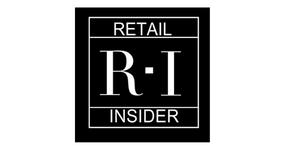Psychologists have long posited that people’s first impressions are formed upon sight. Visual and other sensory cues such as physical appearance, mannerisms, and voice help form an impression of a person. The same can be said of commercial spaces, as consumers often decide if they want to enter a boutique based on their first impression of a shop. Retailers have in recent years been paying increasingly more attention to and analyzing the traffic flow into their shops and determining what factors from a visual perspective draw their customers into the space. We discussed the topic recently with one of the foremost national experts on integrated traffic flow analysis, Sense of Space’s Mark Ainley, who gave us some notable examples of how visual cues can alternatively invite or repel traffic into major stores.

Mark Ainley is the owner and proprietor of Sense of Space, a flow and spatial analysis consulting firm based in Vancouver. A longtime practitioner of this discipline, Mark provides both residential and commercial consultations that are designed on a bespoke basis to create the energy and flow his clients seek. His portfolio encompasses condos in Vancouver to palatial homes in Silicon Valley to commercial spaces in Tokyo, with an international clientele from New York to Bali. On a recent trip to Toronto, we invited Mark to analyze a number of commercial spaces and how they align with best practices in flow analysis.
Describe what you do.
I work with home and retail spaces to help create a natural sense of balance and integration. In homes, this means ensuring that everything is functional and having all decor embody the character of everyone living there while reflecting the inherent integrity of the natural world. In commercial properties, I create flow to and within the space so that potential customers are naturally drawn to the space and want to walk through and explore more. The use of colour, lighting, signposting, displays, and accessories – in addition to the overall layout – can all be customized to increase a sense of flow and comfort in the space. It’s a bit like subliminal advertising, but physically throughout the space.
We’ve all walked into spaces, be they private residences or public buildings, where we felt either invigorated and welcomed or oppressed and uncomfortable. The ancient practice of Feng Shui likens the flow of energy to the flow of water and air. The physical world can be aligned so that things feel like you’re flowing with ease like a relaxing stream, rushing like a raging torrent, or stuck and stagnant like a swamp. My training has helped me hone my awareness of what can create a balanced and inviting space beyond what the untrained eye can see, although the feedback I hear in each consultation is that my suggestions are ‘common sense’ … yet it seems that common sense very often isn’t automatically applied! Once it is, the feeling of the space and the experience of those who are there can indeed start to shift for the better.
What are some of the biggest mistakes that you see in commercial properties?

I think the belief that there are spaces that don’t matter is a huge mistake. There are designers who don’t take into account every second of the customer’s experience walking through a property, in particular some of the seemingly less important areas (like staircases, washrooms, rear entrance). Additionally, employee-only spaces are very important: when a business puts on a slick appearance for customers but doesn’t ensure the comfort and ease of their employees, it creates resentment and inequality. Staff rooms and washrooms need to be well appointed. The offices of administrators are extremely important, as their decisions filter down through the entire chain of command to impact the customer. If the executives are uncomfortable and ill-at-ease, they won’t be making the best decisions. Functionality is absolutely key: if there are issues for cashiers accessing bags, pens, or receipts, the flow of a transaction is compromised, while administrators who can’t easily access their paperwork or devices can find their tasks more cumbersome and stressful.
Why is “flow” so important in drawing people into a space?
First I think it’s important to demystify the word “flow“. I think we all have an innate sense of what it is, but it can end up sounding more mysterious and abstract than is really the case. What we’re looking at is a combination of appeal, accessibility, and user-friendliness. Stores create window displays to entice customers to enter and in-store arrangements to encourage them to explore. The flow that I’m looking for is to some degree connected to that – it involves streamlining the visual and physical invitation to enter the space and then to continue to move through it. If customers don’t feel drawn to enter a store, the potential for earnings decreases – it’s as simple as that. Of course there is more to sales than just getting people into the space, but it is a very important first step.
I once witnessed an arrangement in a well-known store on Robson Street in Vancouver that had set up a display table inside the store so that the corner of the table was facing towards the door. Corners look sharp and threatening to our nervous system and are therefore not seen as welcoming (it’s a little like having someone point at you – it feels intimidating and insulting). I stood outside the shop for several minutes and witnessed one potential shopper after another walk up to the door, glance in, and then walk back out and down the street, certainly consciously unaware that they were being repelled from the store by a sharp corner of a table that was doing the opposite of creating an invitation to enter. About one in ten people who went up to the door actually entered the shop. It was astounding to witness! And this is a very popular, well-known store that regularly changes its configurations… it was clear that this particular arrangement wasn’t working for them.

Why do customers put such a high premium on “welcoming” spaces when they shop? How would this affect business? Would a customer knowingly avoid a shop that they deem to be uninviting?
We all want to feel welcomed in our lives and everyone harbours at least a couple of unpleasant memories of not having been made to feel invited in certain familiar or social situations. If customers are going to spend money at a store, they should most certainly feel welcome. We wouldn’t expect a customer to be willing to spend money when they are treated impolitely, and indeed many businesses have some very clear protocols in place as to how to communicate respectfully with potential clients (not all of them effective, by the way – in fact, overly enthusiastic and chatty greeters can have the opposite effect to what is intended and discourage more introverted shoppers to spend time in the store). If customers don’t feel welcome in the space on a physiological and emotional level, they simply won’t feel at ease enough to feel a connection to the business and what they have available for sale.
I recently went to a very high-end shop in Toronto that I gather is not doing as well as it could, certainly nowhere near what its reputation warrants, and all of the display tables were too close to the product counters – this made it more difficult for customers of even an ‘average’ body size to walk through, let alone someone who might be considered ‘plus size’. This subconsciously translates into body shaming and ends up creating an unwelcoming and even antagonistic environment for some shoppers. Even though I’m on the slender side, the spatial limitation between display tables and counters felt oppressive to me – they weren’t even particularly close, but there certainly wasn’t as much room as there should be for optimal flow, so it certainly would feel like this for anyone of even slightly larger stature. This hardly put me in the mood to linger and look at products, which of course would have an impact on my wanting to spend money there.
Can you give us some examples of shops that exemplify great flow?
The renovated food court at Toronto’s Yorkville Village (formerly Hazelton Lanes) has a wonderful sense of flow: there’s a marvellous seating area where the counter has a meandering wave (much more inviting to sit at than a straight counter and easier for passers-by to walk by) which is outlined in gorgeous rich-toned wood. This space offers a much warmer, more inviting atmosphere than most food courts, which are usually overly metallic and plastic and which can feel very transient and boxy. I was very impressed by the comfortable seating and quality lighting as well.
Nearby, I saw a bustling Italian cafe that everyone apparently raves about – seeing the atmosphere and hearing about its popularity impelled me to go in to try it out myself. There were a couple of tweaks I would make, but the warm inviting colours and ease of access to the order counter (and cash register) made it easy for me to enter and get what I had envisioned wanting when I walked in.
Can you give us examples of where you think flow could be better established to create a more inviting space that would increase customer flow?
Entrances are most important because that’s where we will actually cross the threshold to potentially become a paying customer, so several factors here need to be considered: visibility and lighting, ample space, attractive colours, and appropriate displays are among the key aspects to be considered here.
A while back in Toronto when I walked to the entrance of a famous high-end business, there was a display of 5 mannequins adorned in some aggressive spiky garb just a couple of meters inside the main door. A few things didn’t work here: the five mannequins created a broad display that immediately narrowed down the pathway that allowed for entry into the store; they were facing the door, which made it look like they were leaving the store en masse; and the aggressive clothing made anyone wanting to enter subconsciously feel that they were being accosted by ruffians, the last thing one expects from a high-end shop like this! Three mannequins would be enough for any display (anything more is too distracting), and angling is important to create an inviting and inspiring sense of flow.
A shopping mall that I gather isn’t doing as well as it could be had a rather confusing entrance – sign-posting wasn’t ideally placed, the walkway through a passageway to the actual door was uneven and uninviting, and then next to the staircase heading up into the mall was another staircase going down into a rather undefined space, creating a split view between left and right eyes. Add to this the spiky plants (which look antagonistic) next to the doors and the lack of symmetry in their placement and you have a long list of energetic obstacles that basically cut back on the ease of flow from the sidewalk to the door.
With consultations that can include reviewing proposed floorplans prior to construction to rearranging existing layouts, Ainley can provide practical solutions to streamline the arrangement and ambiance of commercial properties so that they serve consumers, employees, and owners alike.
Mark Ainley’s website is www.senseofspace.com; he can be contacted at mark@senseofspace.com.



![Luxury Resell Boutique Mine & Yours Opens Impressive Storefront in Vancouver’s Yaletown Area [Photos]](https://retailinsider.b-cdn.net/wp-content/uploads/2021/11/MINE-AND-YOURS-OPENING-10-324x160.jpg)

